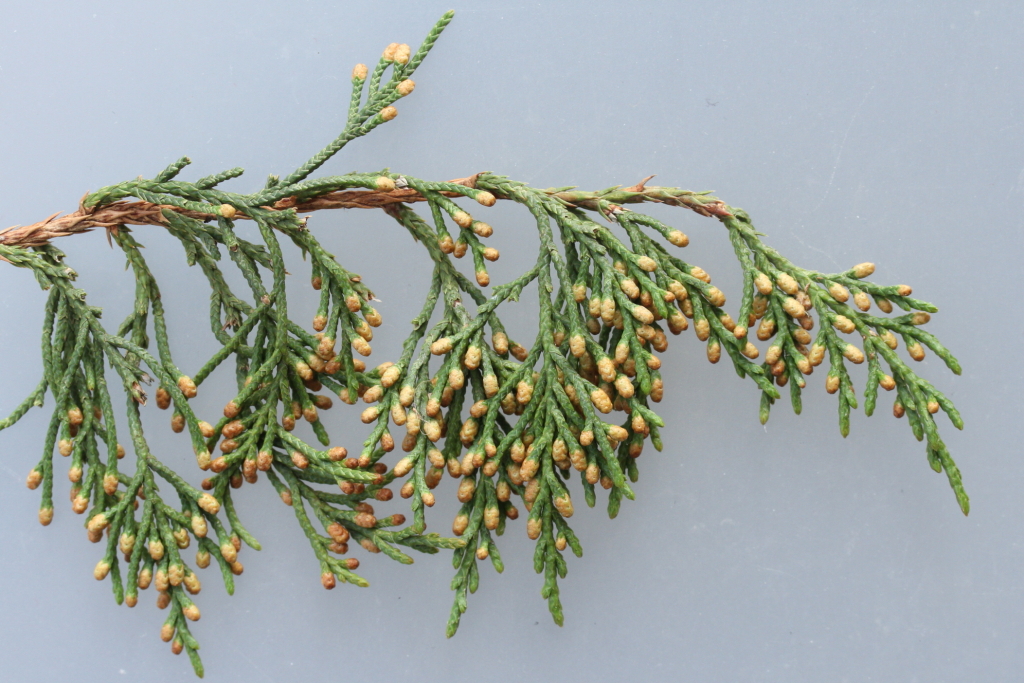Hesperocyparis
Densely branching monoecious trees or shrubs to 35 m high. Ultimate branchlets terete or quadrangular, often in 3-dimensioal clusters, or 2-dimensional sprays. Leaves scale-like, decussate, completely enclosing ultimate branches, ultimate leaf segments monomorphic, usually with a resin gland near tip on abaxial surface. Male cones terminal, solitary, sporophylls in 3–10 decussate pairs, scales imbricate, 2–6 sporangia per sporophyll. Female cones terminal, solitary, ±globular, woody, maturing in the second year; scales decussate, in 3–6 pairs, valvate, peltate; apex with a short mucro. Seeds flattened, ridged, with narrow lateral wings; borne on scales, 6–20 per scale. Cotyledons 3–5 (usually 4).
About 16 species; all western hemisphere, 2 naturalised in Victoria.
Recent molecular phylogenetic studies have confirmed the distinction of the New World cypresses, with several species placed in the new genus Hesperocyparis. These genera are weakly defined by morphological characters, differing principally in cotyledon number. However, the morphological characters defining these and other genera (e.g. Callitropsis and Xanthocyparis) do not appear to be absolute, and use of nomenclature may still open to interpretation.
 Spinning
Spinning
